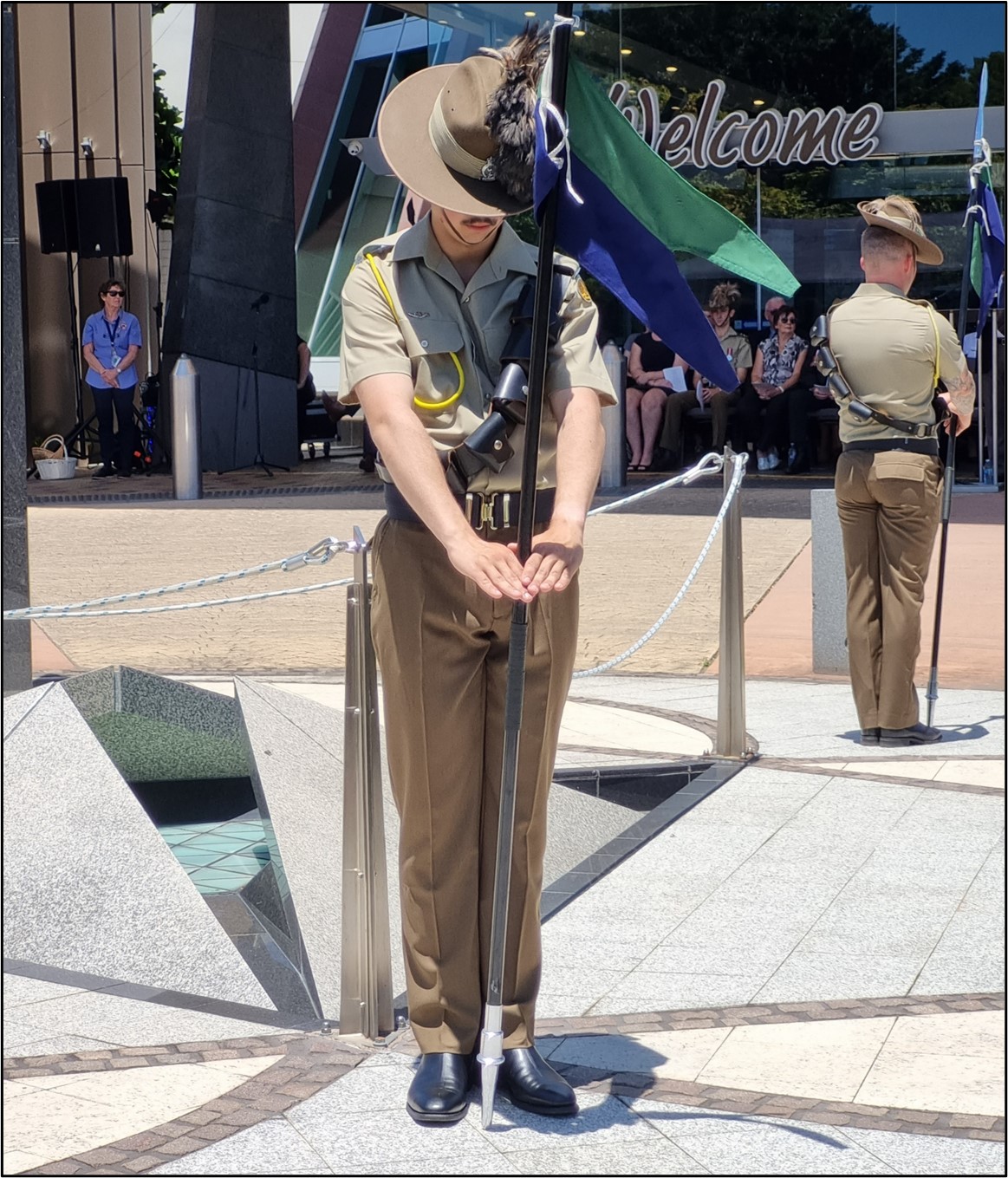
|
Vol 79 |
Page 13 |
Privacy Policy | Editorial Policy | Profit Policy | Join the Association | List of Members | Contact us | Index | Links
Back Go to page: 1 2 3 4 5 6 7 8 9 10 11 12 13 14 15 16 17 18 19 20 Forward
Contents:
Remembrance Day Kedron Wavell RSL 2022
The reason why we wear a poppy.
The Nation falls silent to mark Remembrance Day.
Lest we forget.
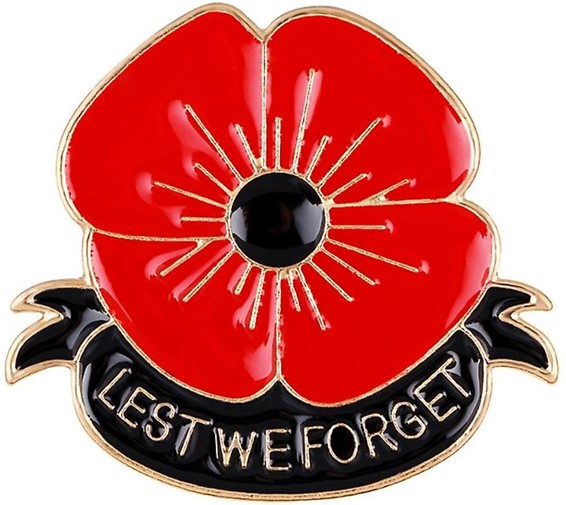
At the eleventh hour on the eleventh day of the eleventh month, we will remember them.
On the 11th November, the nation fell silent to mark Remembrance Day as services were held across the country on the anniversary of the end of the First World War. We honour those who serve to defend our democratic freedoms and way of life and remember the service and sacrifice of the Australian Defence Forces community.
Remembrance Day each year honours the members of the Armed Forces who have served their country and pays respects to the fallen who have given their lives in defence of our democratic freedoms. In 1918, Australia made a promise never to forget the service and sacrifice of 416,000 Australians who enlisted and over 60,000 who died. For over 100 years, we have kept this promise. We remember them still.
Remembrance Day was originally called 'Armistice Day', and 2 minutes of silence was observed for the first time at 11 am on 11 November 1919 to remember those who had died. Prime Minister Billy Hughes said at the time:
“Of their deeds it is not necessary for me to speak. Of their valour, endurance and resource at Gallipoli, Pozieres, Baupaume and other famous fields, men still speak with awe”.
Hughes put our soldiers' sacrifice into perspective when he added:
“Our heritage, our free institutions of government - all that we hold dear - are handed back into our keeping, stained with the blood of sacrifice. Surely not only we, their fellow citizens, but Australians throughout the ages, will treasure forever the memories of those glorious men to whom the Commonwealth owes so much, and will guard with resolute determination the privileges for which they fought and suffered.”
RSL Sub-Branches all over the country held services, the following was held at the Kedron Wavel Services Club by the Kedron Wavell RSL Sub-Branch.
People began to assemble at the Club from 10.00am in readiness for the 10.30am service. MC for the morning service was Barry Kyrwood, the Sub-Branch’s Ceremonial Committee Member.
At 10.30am, Barry welcomed everyone to the ceremony, read the rules of engagement then called for the mounting of the Catafalque Party. (See below).
The Party consisted of “volunteers” from the 2nd/14th Light Horse Regiment (Queensland Mounted Infantry) and were led by Cpl Chappel.
After the Catafalque Party was established, MC Barry Kyrwood asked the president of the RSL Sub-Branch, Ken Roma (below), to officially welcome everyone to the Ceremony and to introduce the official guests.
MC Barry Kyrwood then called on Lt Raven from Gallipoli Barracks in Brisbane to give the main address.
While the Light Horse association with their well-trained horses looked on.
It was then time for Wreath laying.
Lt Raven.
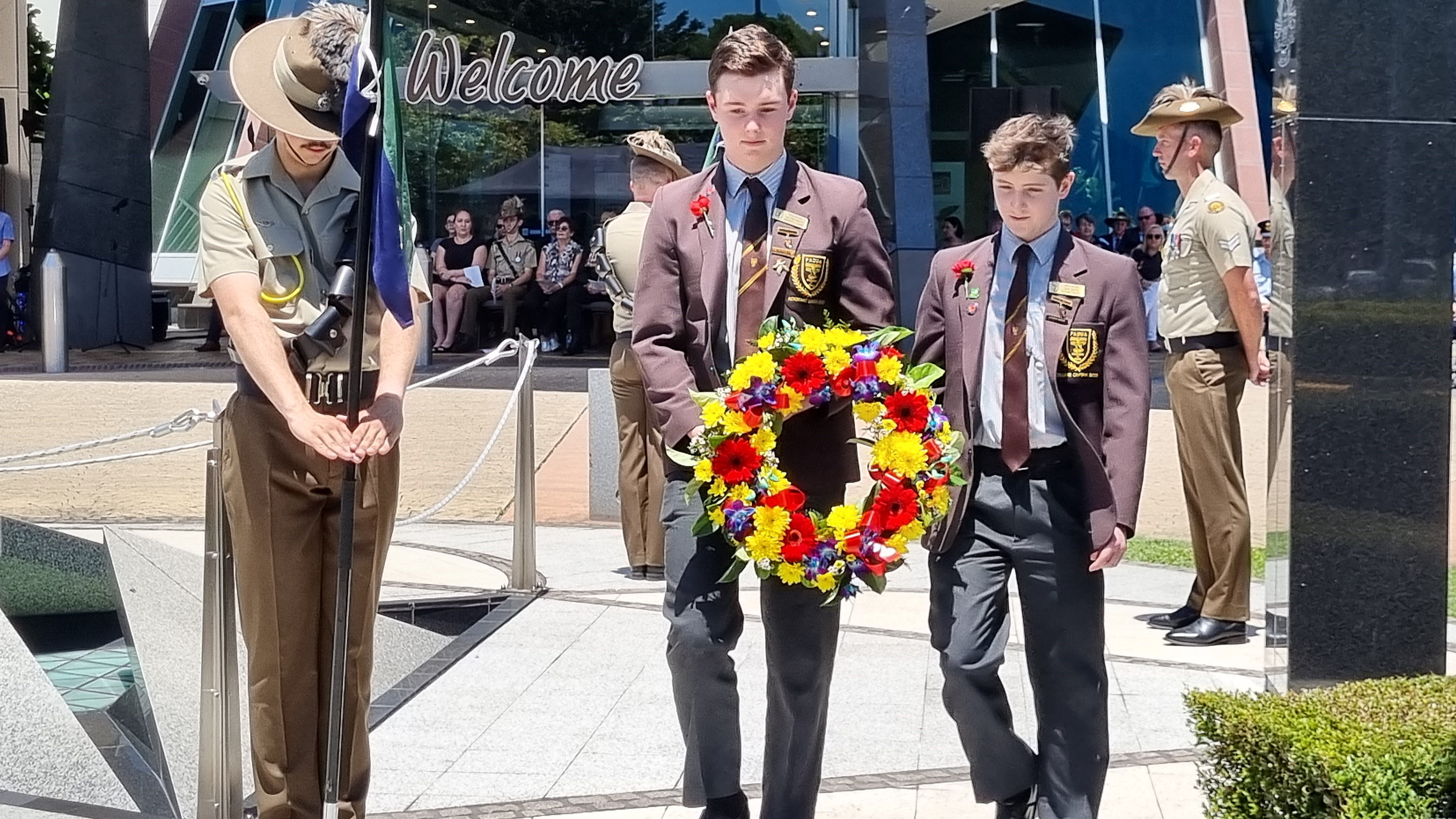
Students from Padua College.
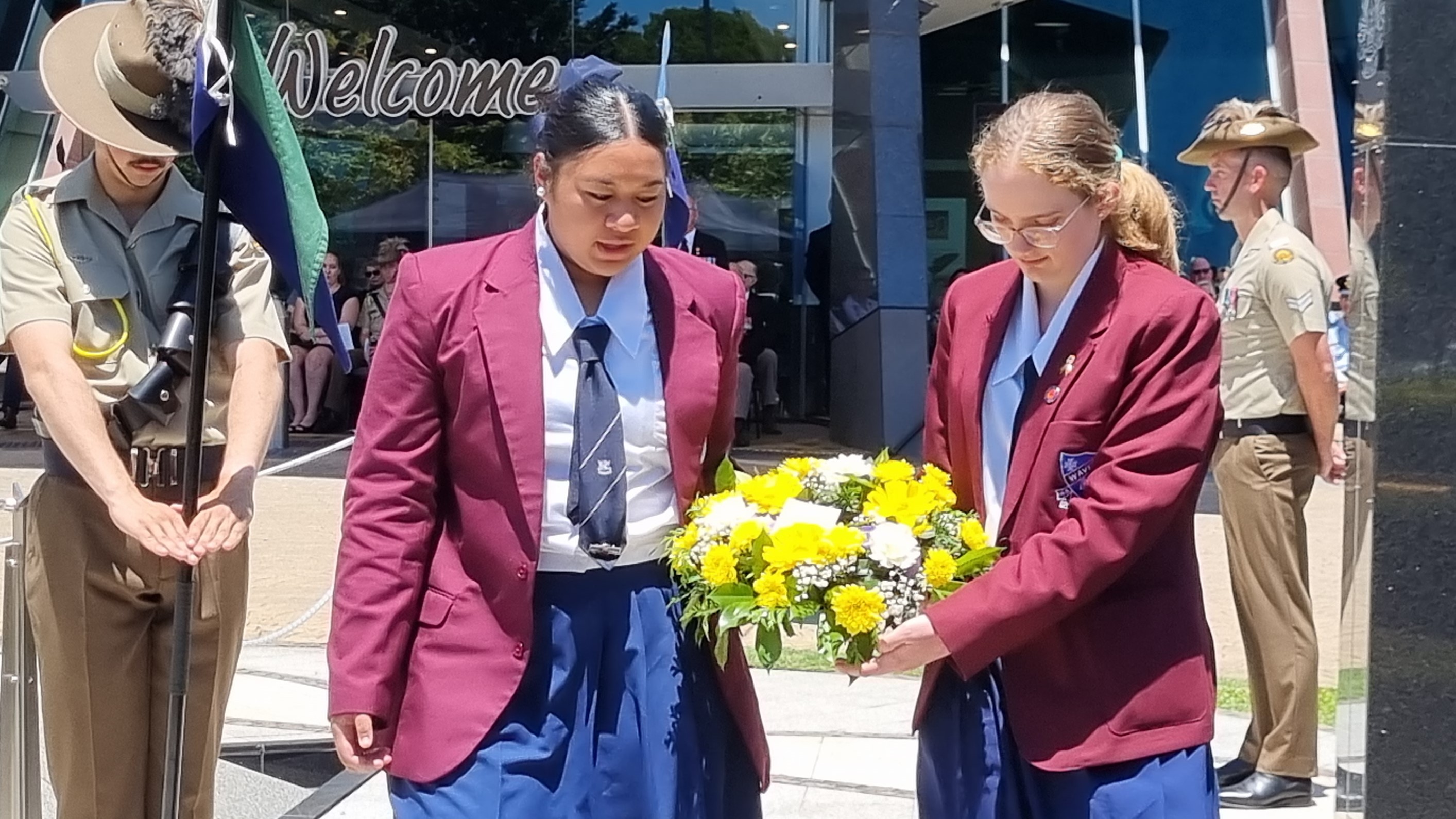
Students from Wavell High.
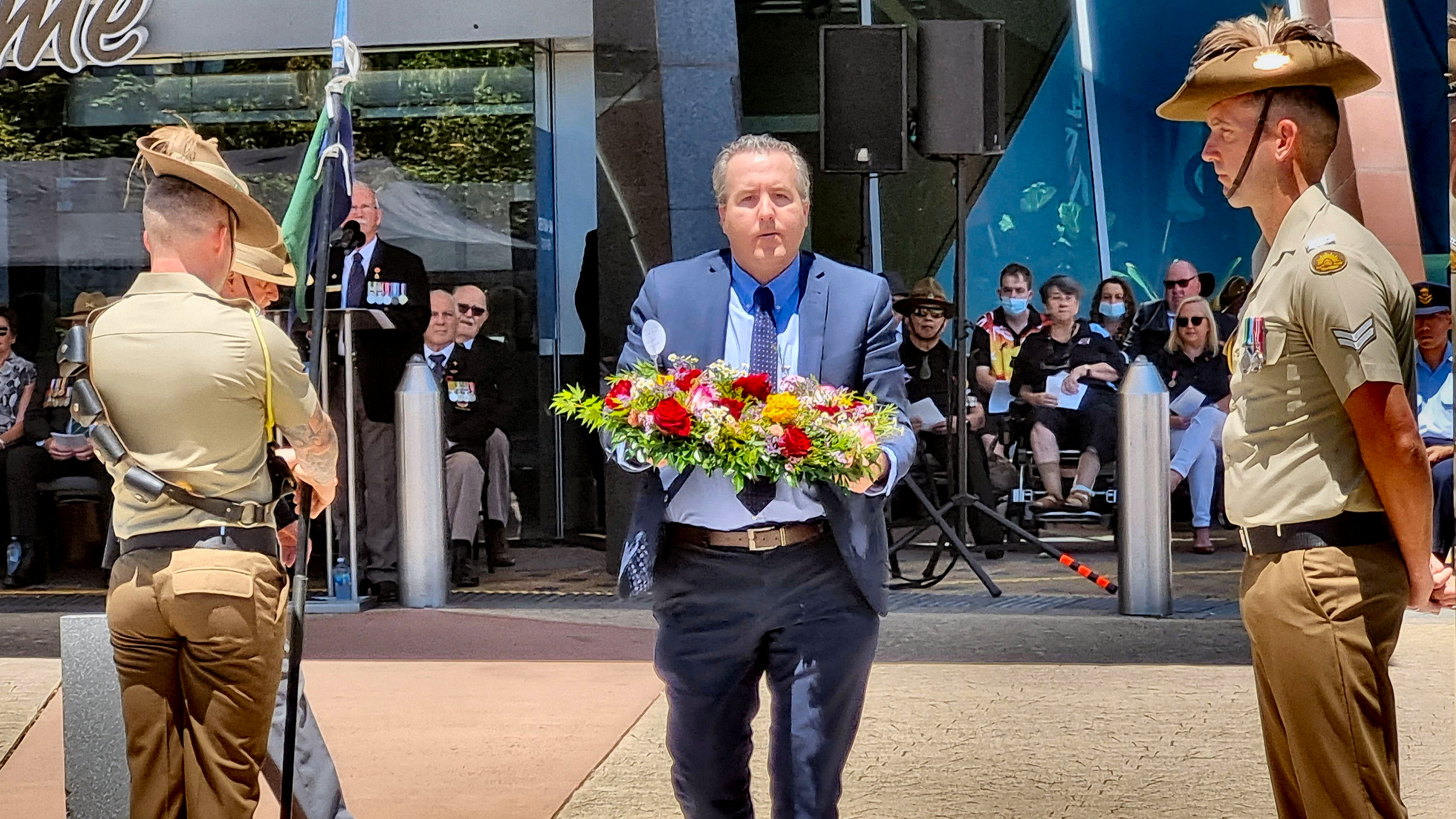
Jimmy Sullivan, State MP for Stafford.
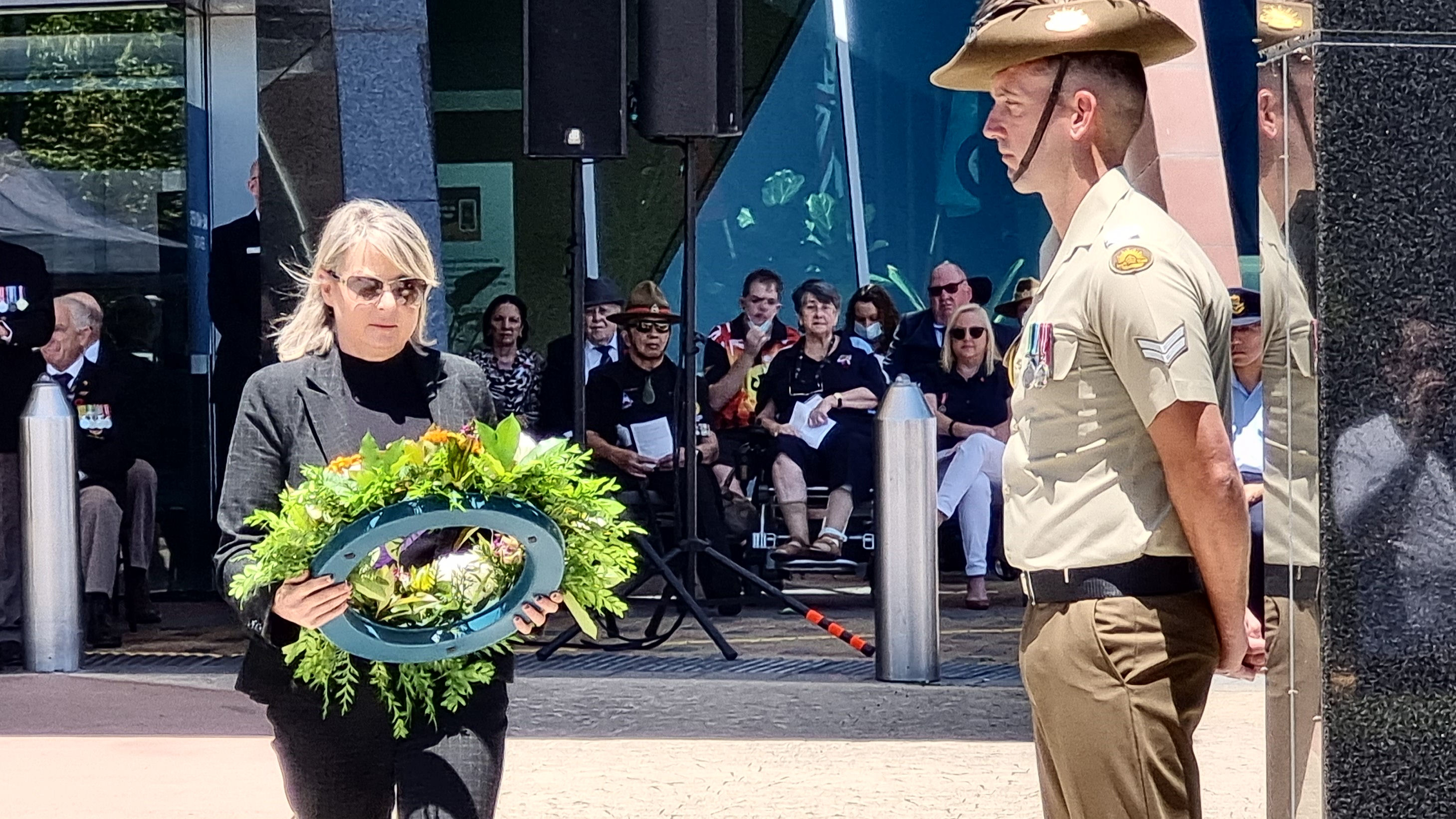
Councillor Fiona Hammond.
Phil Lillibridge
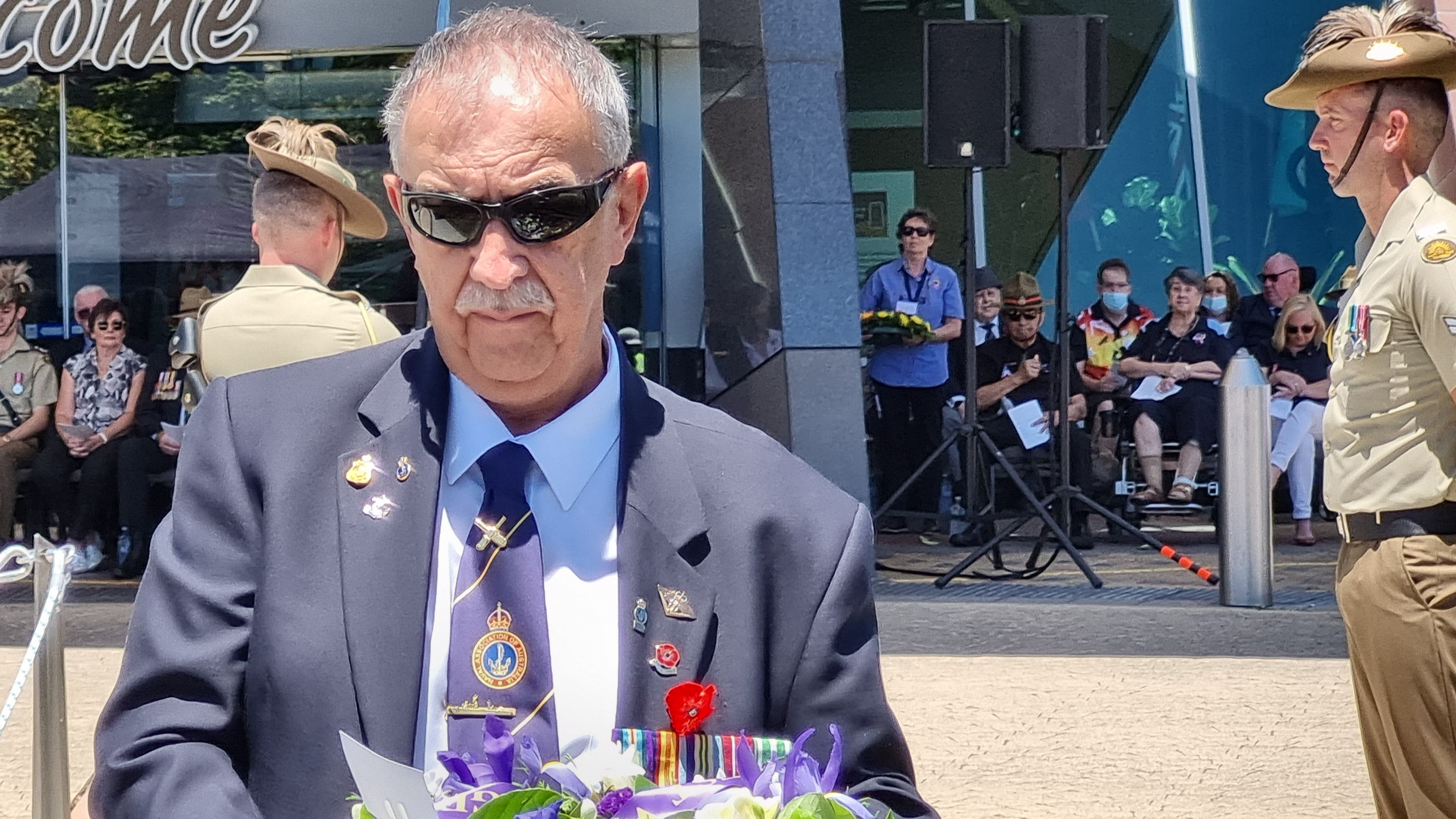
Colin Billingsley
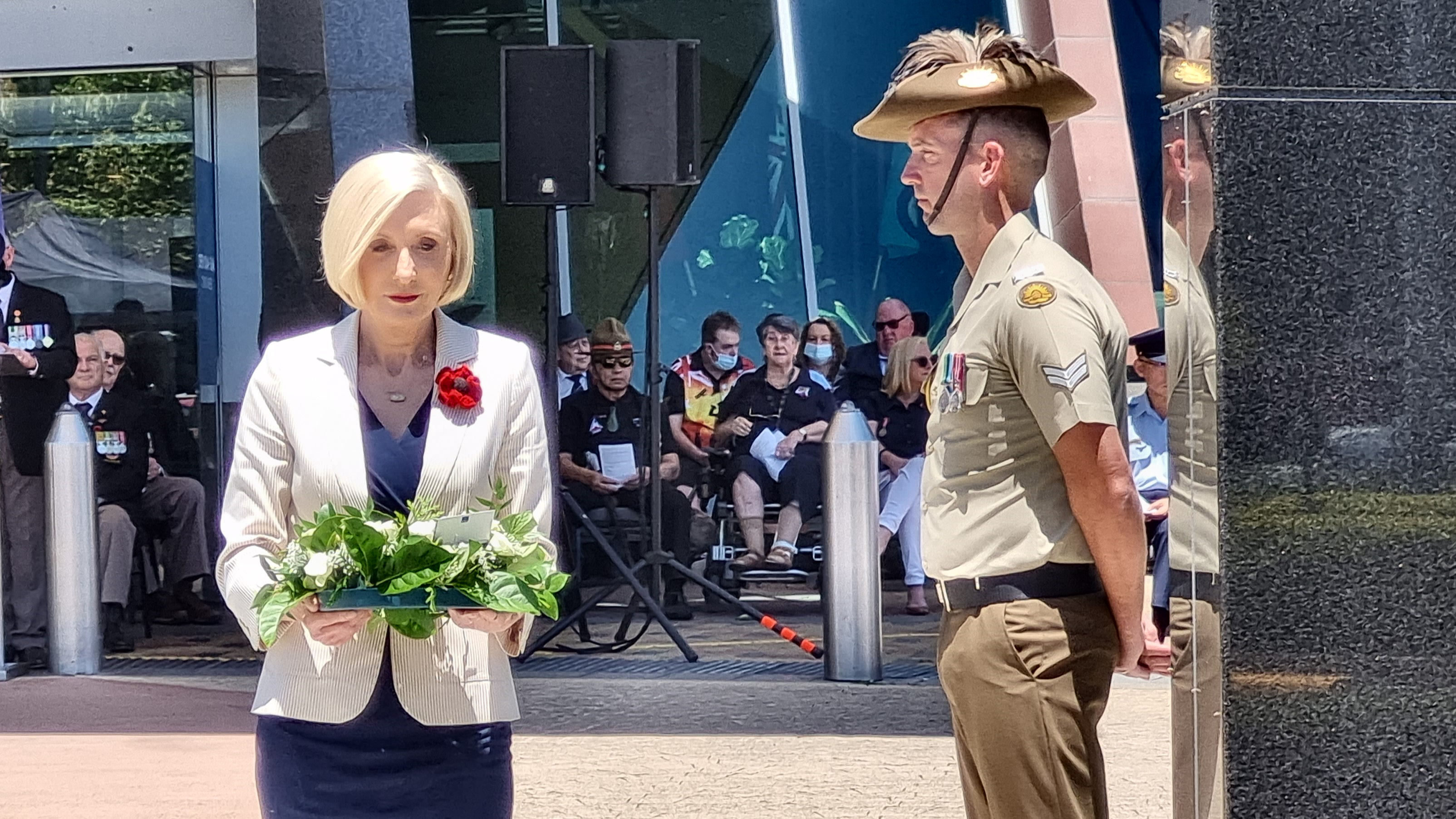
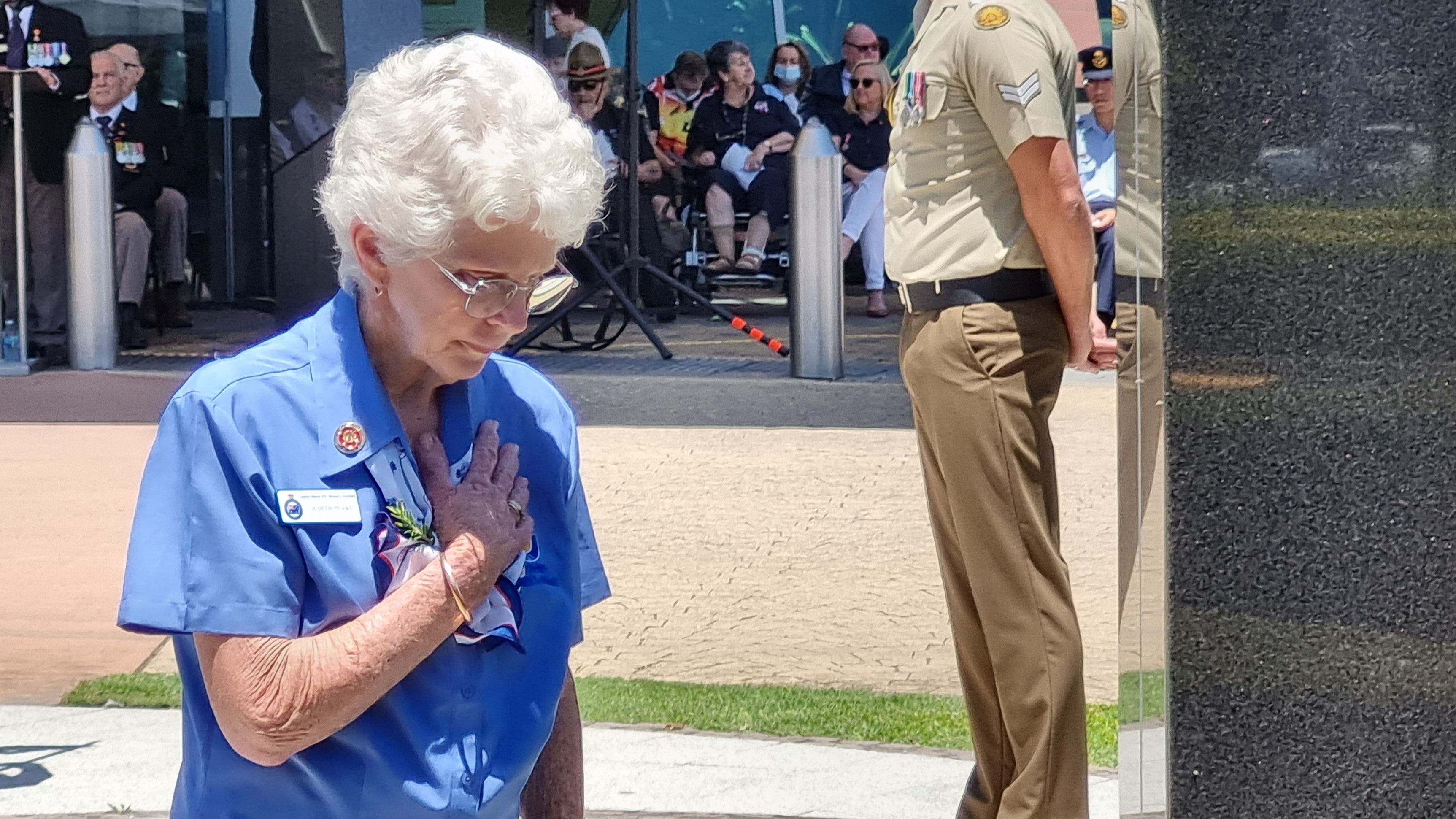
Judy Peake - Woman's Auxiliary.
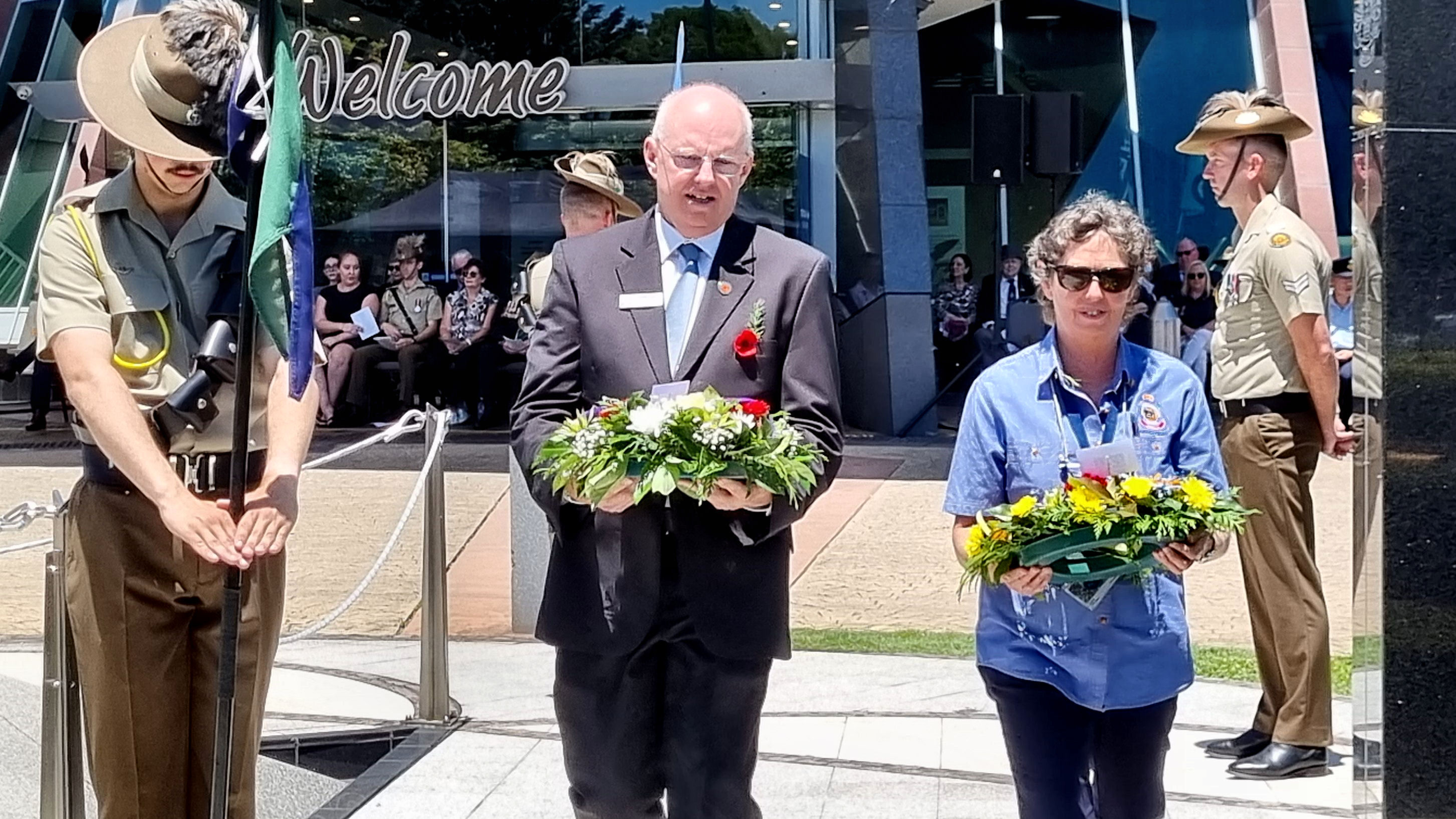
Andrew Kelly, Lesley Quirke.
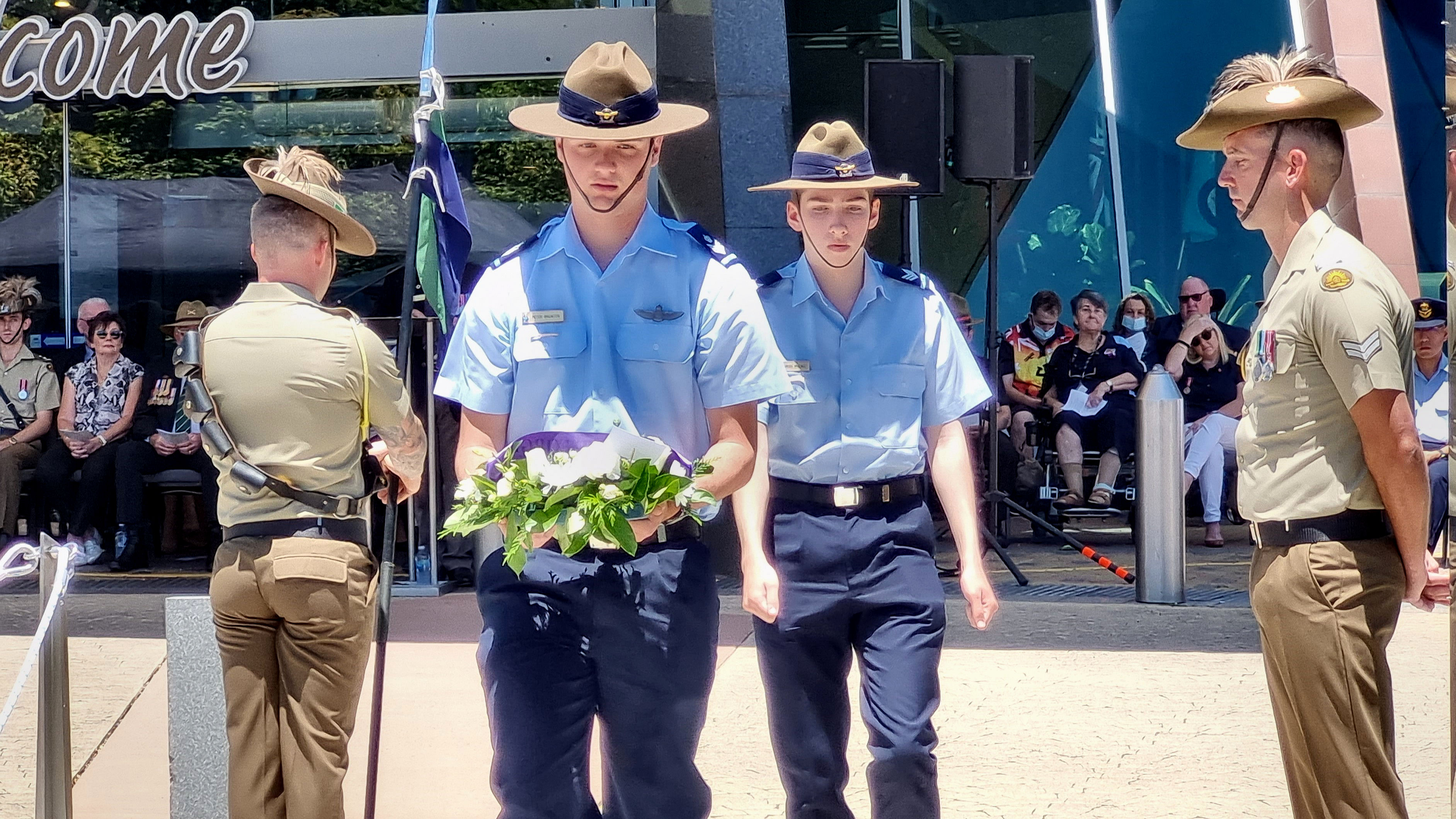
Air Cadets.
While people were laying wreaths, Piper, Bruce Campbell played the lament .
Others sat solemnly in the hot sun.
|
All the while the Wreath Laying Ceremony was underway, the young blokes on the Catafalque Party did a marvellous job, standing rock solid in the sun for 30 – 40 minutes.
Oh to be young and fit again. |
|
At the conclusion of the Wreath Laying Ceremony, Peter Cairns, the Kedron Wavell RSL Sub-Branch called everyone to their feet and then recited the ODE.
|
The Australian Flag was then lowered, the Last Post was played followed by one minute’s silence, after which the Rouse was played and the flag was once again raised on the mast. |
|
Rosie Tom, a delightful young lady, then sang the New Zealand and Australian National Anthems.
The nation's traditional, favourite poems for Remembrance are recited each year as part of the commemorative services. Poetry is one of the many forms of expression that the nation turns to as we reflect on the sacrifice made in the defence of our way of life. One favourite that is recited at most events is “In Flanders Fields”. It was recited by Peter Saxon, a Sub-Branch Committee Member.
Click the pic to read the words.
The poem "In Flanders Fields" was first published in December 1915 after it was penned by Canadian physician Lieutenant-Colonel John McCrae during the First World War. After appearing in London’s Punch magazine, it soon become a popular reflection on the sacrifice of war.
McCrae's focus was on the peace that follows death, from the perspective of fallen soldiers lying in their graves. He saw action in the First World War and supervised medical care in Boulogne with the Canadian Expeditionary Force.
The Catafalque Party was then dismounted and everyone was invited into the Kitty-Hawk Room for refreshments.
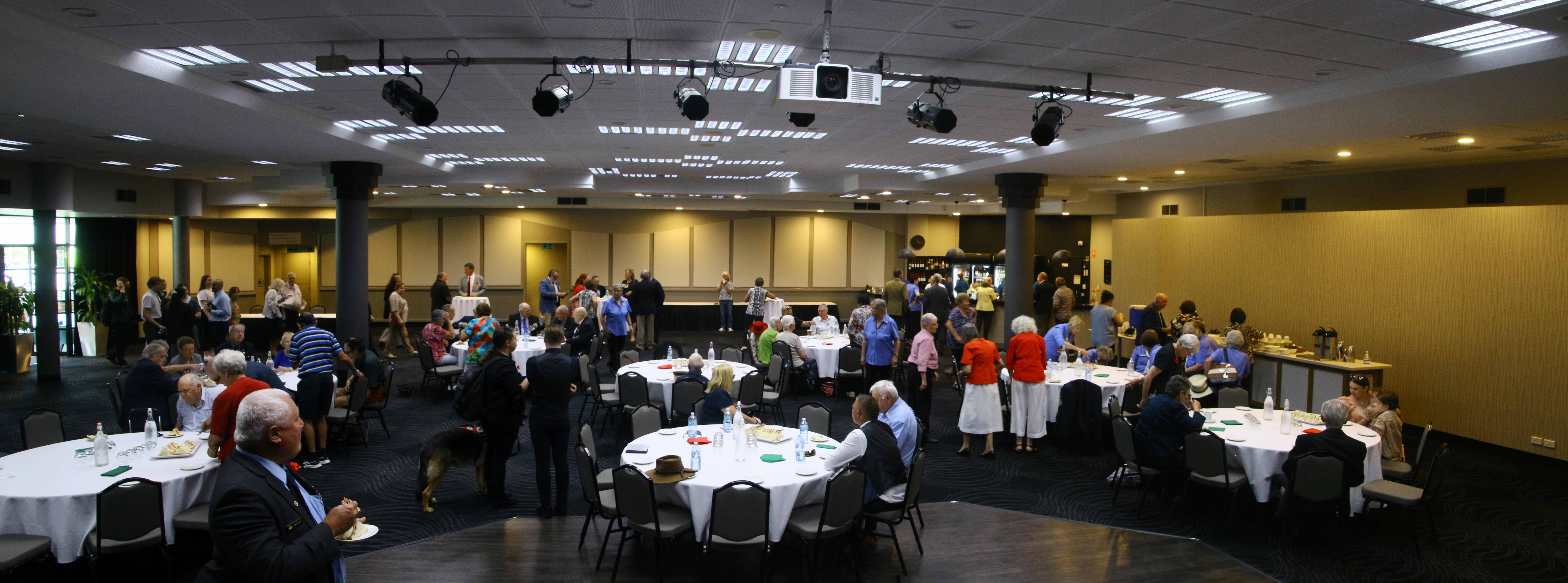
As a kid I used to watch the Wizard of Oz and wonder how someone could talk if they didn't have a brain.
Then I got Facebook.
Remembrance Day – Perth, WA.
Ted McEvoy sent us these pics. The ceremony was held at the Air Force Memorial Estate in Bull Creek in WA.
Boss: Do you believe in life after death?
Me: Certainly not! There's no proof of it.
Boss: Well there is now. After you left early yesterday to go to your uncle's funeral he came here looking for you.
The reason we wear a poppy.

On November 7th, 1920, in strictest secrecy, four unidentified British bodies were exhumed from temporary battlefield cemeteries at Ypres, Arras, the Asine and the Somme. None of the soldiers who did the digging were told why. The bodies were taken by field ambulance to GHQ at St-Pol-Sur-Ter Noise.
Once there, the bodies were draped with the union flag. Sentries were posted and Brigadier-General Wyatt and a Colonel Gell selected one body at random. The other three were reburied. A French Honour Guard was selected and stood by the coffin overnight of the chosen soldier. On the morning of the 8th November, a specially designed coffin made of oak from the grounds of Hampton Court arrived and the Unknown Warrior was placed inside.
On top was placed a crusader’s sword and a shield on which was inscribed:
"A British Warrior who fell in the GREAT WAR 1914-1918 for King and Country".
On the 9th of November, the Unknown Warrior was taken by horse-drawn carriage with Guards of Honour and the sound of tolling bells and bugle calls to the quayside. There, he was saluted by Marechal Foche and loaded onto HMS Verdun bound for Dover. The coffin stood on the deck covered in wreaths, surrounded by the French Honour Guard. Upon arrival at Dover, the Unknown Warrior was met with a nineteen-gun salute - something that was normally only reserved for Field Marshals.
A special train had been arranged and he was then conveyed to Victoria Station, London. He remained there overnight and, on the morning of the 11th of November, he was finally taken to Westminster Abbey.
The idea of the unknown warrior was thought of by a Padre called David Railton who had served on the front line during the Great War, the union flag he had used as an altar cloth whilst at the front, was the one that had been draped over the coffin. It was his intention that all of the relatives of the 517,773 combatants whose bodies had not been identified could believe that the Unknown Warrior could very well be their lost husband, father, brother or son...
THIS is the reason we wear poppies.
We do not glorify war. We remember - with humility - the great and the ultimate sacrifices that were made, not just in this war, but in every war and conflict where our service personnel have fought - to ensure the liberty and freedoms that we now take for granted.
Every year, on the 11th of November, we remember. At the going down of the sun, and in the morning, we will remember them.
Lest We Forget.
But why a Poppy?
During World War I, red poppies were among the first plants to grow on the Western Front in Europe. They bloomed across the wasted battlefields of northern France and Belgium.
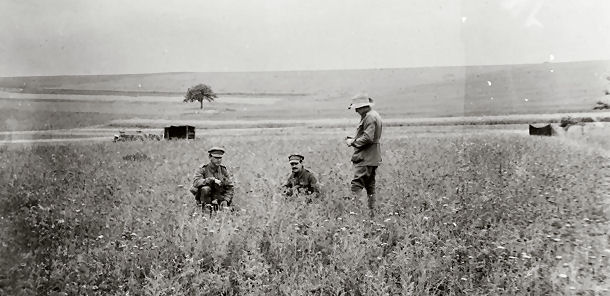
Australian troops taking a rest from the Somme fighting in a field of red poppies near Allonville, France.
AWM photo.
In 1918, American academic and teacher Moïna Michael was inspired to write a poem after reading McCrae's In Flanders Fields. Michael's poem is called We Shall Keep the Faith. She is known as the first person to wear a red poppy as a personal commemoration and also encouraged the sale of poppies to raise money for veterans. This gave rise to the poppy becoming a symbol of remembrance around the world. (See HERE)
Frenchwoman Anna Guérin, who made artificial flowers, first sold poppies in Britain in 1921. She is known as the 'Originator of the Poppy Day'. Guérin raised money in support of veterans and the families of those who had died during World War I.
In 1922, an ex-servicemen's organisation, the Royal British Legion started a factory to make poppies. The factory employed many returned soldiers and sold poppies to raise money to help veterans and their families. Selling poppies is still a big part of its fundraising campaign today.
Today, the red poppy has become a very special symbol of commemoration on:
-
Remembrance Day in Autralia and other Commonwealth countries
-
Anzac Day in Australia and New Zealand
At an Anzac Day dawn service in Palestine in 1940, each soldier dropped a red flower from Mount Scopus onto the Jerusalem Memorial. A senior Australian officer also laid a wreath of flowers.
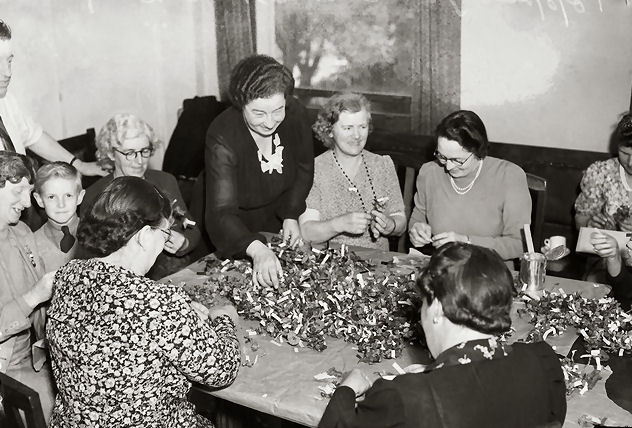
Australian volunteers making poppies to sell on Armistice Day, Melbourne, 5 November 1942.
AWM Photo.
In Australia, we recognise red poppies as the flower of remembrance. Traditionally, they are:
-
worn on clothing for commemorative services
-
placed beside names on honour boards and rolls
-
woven into wreaths on special days of commemoration
May the tradition continue.!
A woman I worked with locked me in her appartment for two months and used me as a sex slave.
One day she forgot to lock the door and I thought, Great!, this was my chance. So I ran upstairs and grabbed the phone.
Half an hour later the pizza arrived and I went back down to the basement.
Sister Greta Towner.
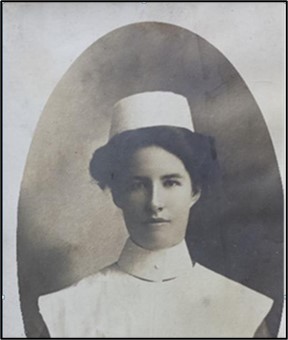
Greta Towner was born at “Glencoe” station, Blackall, Qld, in 1891, she attended Blackall State School and continued her education in Rockhampton after which she trained as nurse at the Rockhampton Children’s Hospital, registering as a Nurse in August 1914
As the world was at war, she enlisted in the Army in July, 1915 and served with the AANS (Australian Army Nursing Service) in Egypt (Heliopolis, Cairo), Lemnos Island from September 1915 during the Gallipoli Campaign and on Sea Transport ships. In 1917 she saw service in England at the Southall Hospital which specialised in amputations and artificial limbs. In March 1917 she arrived in France and was posted to the 8th Stationary Hospital in Rouen. On 27 September 1917 she was posted to the 1 AGH (1st Australian General Hospital) in Rouen and served there for the remainder of the First World War.
The conditions on Gallipoli had seen diseases such as dysentery, various fevers, rheumatics, gastritis and pneumonia become endemic. The sick and injured were transported to ships and islands including Lemnos Island where just months before the ANZAC’s had practised their landings before the landing at Gallipoli on April 25th 1915.
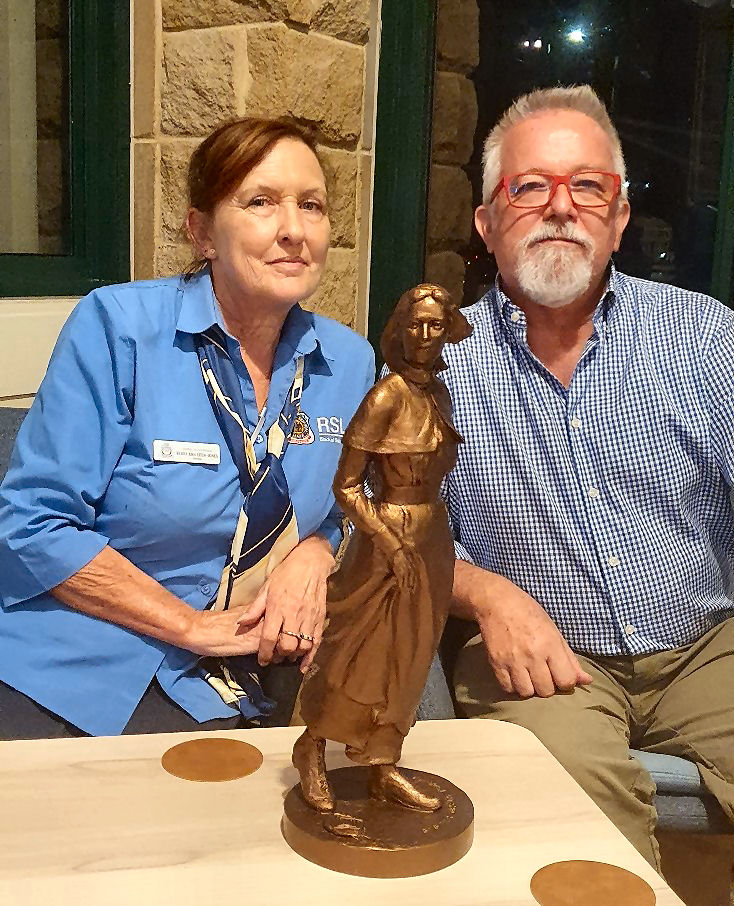
Greta and her fellow nurses at the 2ASH worked in primitive conditions, caring for patients in tents without running water, sewage systems and indeed often with a lack of proper medical supplies to care for the men. The commanding officers did not warmly welcome Greta and her fellow nurses – it was the first time women had served in the 2ASH. The nurses learnt new skills in managing their tented hospital – mending tears, re-hooking the walls or tightening and loosening the guy ropes, depending on the weather. When winter set in it was common for tents to collapse on the patients with the nurses pitching in to salvage the situation, including those injured by the collapse. Water was rationed, delivered by ships. The nurses improvised, tearing up sheets for bandages, turning off lamps and sitting in the dark to conserve fuel and propping up patients with rocks when bedding was not available.
Sister Towner was officially discharged on 4 July 1919 and upon her return to Australia, she took on pharmacy studies at the University of Sydney, emigrating to the United States of America where she married twice and held various positions as nurse in veteran hospitals. Sister Greta passed away in the US in 1961 and shares a gravestone with her second husband, Harry Maloney.
The local people at Blackall, in conjunction, with the local RSL Sub-Branch, intend to honour Sister Towner by erecting a bronze statue of her in the town’s Memorial Park.
Cam Crossley, a sculpturer from the Sunshine Coast, was commissioned to produce a bronze sculpture of Sister Greta Towner and recently he showed a miniature to the Blackall towns-people and the RSL Sub-Branch - where it was met with enthusiastic approval.
Above, Terri-Ann Eden-Jones, the President of the Blackall RSL Sub-Branch
with Cam Crossley and the miniature at a recent event at Blackall.
Anzac Day Schools’ Awards 2023 – entries now open
The theme for the 2023 Anzac Day Schools’ Awards is now official – Commemorating Australia’s Vietnam War Service.
Schools across Australia are encouraged to commemorate the 50th anniversary of the end of Australia’s involvement in the Vietnam War. This theme aims to inspire students to discover personal stories and take part in commemorative activities to honour the service and sacrifice of Australian men and women who served in the Vietnam War.
The Anzac Day Schools’ Awards is a national competition that recognises the creative and engaging work of primary and secondary students, teachers and schools when learning about our military history. The awards encourage schools to connect with veterans and current serving personnel to provide students with a personal and meaningful understanding of Australia’s wartime history.
Previous entries have included a wide variety of projects. Schools can showcase their work in creative ways such as:
-
making a podcast to share with the school community
-
creating an exhibit, gallery walk or virtual tour
-
recording a video chronicling the life and contributions of a veteran
-
building a website to share student investigations.
Schools can start preparing now for their entry and submit any time until 31 May 2023. For more information, including prizes, entry requirements and judging criteria to help start planning, visit the Anzac Portal.
